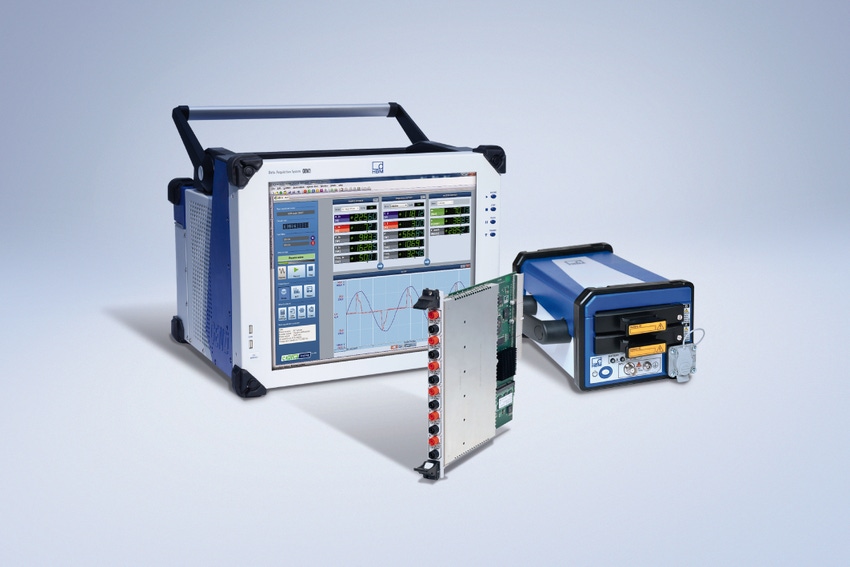Lessons Learned: Safely Test High-Power Circuit Breakers
Here’s a list of do’s and don’ts to help deal with the potentially hazardous testing of high-power circuit breakers.
May 29, 2018

Wherever circuits need protection against current overloads or short circuits, you’ll find circuit breakers. They range from fingernail-sized devices for semiconductor protection to truck-sized devices for the high-power circuits that supply electric power to cities. Testing high-power circuit breakers safely and accurately can be difficult and extremely hazardous for both personnel and test equipment.
Circuit Breaker Fundamentals
A circuit breaker’s function is to provide an automatic way to remove power from a faulty system in order to protect it from damage caused by excess current. When current is flowing normally through the circuit breaker, its contacts must carry the load current without excessive heating. Once a fault is detected, the circuit breaker must open to interrupt the flow of current. When a high current or voltage is interrupted, an arc is generated. Circuit breakers must also withstand the heat produced by the arc.
|
An HV6600 high-voltage/high-power isolated digitizer-transmitter in the test cell serves as the data recorder’s remote front end. Its fiber-optic link to the GEN3i eliminates ground loops and guarantees safe isolation between the device under test in the test cell, located up to 800 meters away, and the personnel operating the GEN3i in the control room. |
Given the high voltages and currents associated with high-power circuit breakers, research and development activities for these devices have the potential to be extremely hazardous. Because they haven’t been thoroughly characterized at this stage, circuit breakers that are overstressed can explode and/or burn. To limit the possible damage, tests are typically performed in test cells with thick walls and bullet-proof glass. Often, the testing location is separated from the test instrumentation by enough distance to protect operators and equipment from flying debris and smoke.
Circuit Breaker Testing
At Sensata Technologies, a supplier of sensors and controls, engineers knew how challenging circuit breaker testing could be. The company’s engineering test manager, Gene Dobbs, had relied on several oscilloscope-based test systems for more than two decades. Dobbs himself had developed the system’s control software. As the components aged and required repairs, however, Dobbs and his engineering test team realized it was past time to invest in new test systems for their hydraulic-magnetic circuit breaker/protector R&D, production test, and UL testing applications. Here’s a list of vital lessons Dobbs and his team learned from the experience:
1. DON’T let the past limit your future. The two oscilloscope-based test systems used by Dobb’s staff had been in service for more than 20 years. As the system aged, getting support from the original manufacturer got tougher. When the one system failed completely, they knew it was past time to invest in new equipment.
2. DO define what you need comprehensively. Before attempting to “shop” for new hardware, the team took the time to document their requirements. It had to:
Support interrupting hundreds of kilo-amps of currents while voltages up to several kilo-volts were present.
Provide accurate and reliable test results and allow testing for compliance with international standards.
Accommodate hardware challenges like isolation, amplifier drift, noise, electromagnetic immunity, and battery operation.
Allow scaling the channel count to accommodate monitoring voltage and current up to three-phase circuit power, as well as an original reference voltage and current from the generator.
Withstand damage from prototype circuit breakers that can explode when stressed beyond their design parameters.
Include analysis capabilities to obtain calculated results and produce answers within industry standards.
Be intuitive enough for non-engineers to operate.
Include technical support for creating the user interface.
Come with in-house system training for both engineers and operators.
3. DON’T just tell suppliers what you need; show them. A consultant advised the team to use a data acquisition solution from HBM Test and Measurement. Before the testing staff at Sensata’s Cambridge lab met with the team from HBM, they created a cellphone video to illustrate the capabilities they required. Later, HBM created its own video demonstrating how the proposed solution would match up with Sensata’s requirements.
4. DO document what works so you can do it again. The system in the control room of the short-circuit test lab is based on an HBM Genesis GEN3i three-slot data recorder. Fiber-optic cable links two optically isolated receiver cards in the data recorder to eight external digitizer-transmitters. The system is configurable with up to 96 input channels and can be synchronized to other devices in the lab using PTP time synchronization.
|
An HV6600 high-voltage/high-power isolated digitizer-transmitter in the test cell serves as the data recorder’s remote front end. Its fiber-optic link to the GEN3i eliminates ground loops and guarantees safe isolation between the device under test in the test cell, located up to 800 meters away, and the personnel operating the GEN3i in the control room. Extra front-end shielding protects the transmitter from harsh environments, including strong electric and magnetic fields. A menu-driven user interface eliminated the need to develop a custom application, saving Sensata time and programming resources. The intuitive software enables the operator to set up and perform any type of test easily, which automatically performs sensor parameterization, data storage, as well as all analysis and report generation in accordance with the standards associated with each part.Two additional short-circuit test labs have been configured with similar application-specific modifications. The systems have interchangeable components, so they can be swapped out for short-term backup if needed. Now, Sensata can verify that its products meet the published specs, comply with the relevant standards, and characterize prototypes quickly, safely, and accurately.
Mike Hoyer is an applications engineer for HBM Test and Measurement.
About the Author(s)
You May Also Like


.jpg?width=300&auto=webp&quality=80&disable=upscale)


